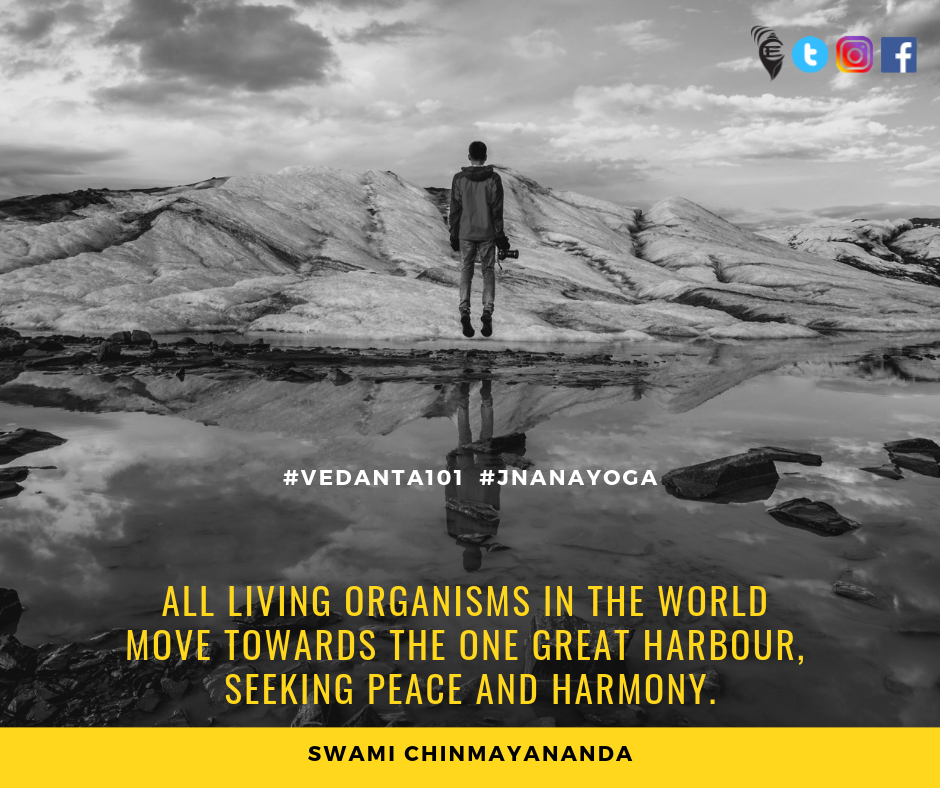A Study of the Bhagavadgita - Chapter 6.7. Swami Krishnananda.
----------------------------------------------------------------------------------
Tuesday, June 22, 2021. 5:02.AM.
Chapter 6: Sankhya – The Wisdom of Cosmic Existence - 7.
----------------------------------------------------------------------------------
1.
This intricate process of a yajna is not merely offering something mechanically for no purpose, but is an inwardly oriented vital action of the inward relationship between the adhyatma, the adhibuta and adhidaiva. So even in an external ritualistic homa or yajna, a universal setup is produced by the contemplation of the yajnamana, or the performer. In a passage of the Brihadaranyaka Upanishad, the question is raised by a member of the audience in the court of Janaka who addresses Yajnavalkya: "Any offering that is made is perishable. All actions lead to results which will cease one day or the other. So all sacrifice ends in a perishable result. How would the performer of sacrifice attain immortality through sacrifice? Answer this question, Yajnavalkya."
2.
Yajnavalkya says, "What you say is correct because the offering is a limited, finite substance. It may be some charu, some ghee, or some preparation like porridge; it is a perishable unit indeed. The altar is also a limited substance. Where is the unlimitedness there? How would heavenly enjoyment or immortality accrue to the performer if perishable objects are offered at a perishable altar? The perishable nature vanishes and the impershability implied in the performance of the yajna manifests itself, provided the yajnamana at the same time contemplates the divinity that is between the adhyatma and the adhibhuta. If the yajna or action, or whatever it is, is performed minus the consciousness of the adhidaiva, then it becomes a perishable deed."
3.
So yajna, even done ritualistically, is a great thing, and you can offer material substance, as is done usually in sacrifices, as symbols of your gesture of offering to the divinity; or yajnas can be performed only mentally. Agastya, as is told to us in the Mahabharata, seems to have performed a great yajna without any material whatsoever – no alter, no vessels, no ghee, no charu, no porridge, no yajamana, no priest, nothing was there. He was sitting there contemplating the whole process, and it produced the result. Mental action is more powerful than physical action, but physical action can also assume meaning if the mind is connected with it. So yajnas can be outward or inward, and in the Fourth Chapter it will be mentioned how varieties of yajnas are possible – dravya yajna, yoga yajna, and so on.
4.
The point is that this yajna principle which was apparently instituted by God Himself at the time of creation, as is mentioned in this verse, implies that you are bound by a bond of sacrifice to the universal Whole right from the birth of your personality. That is, you are duty-bound. This is an emphasis further laid on what is already said in the Second Chapter. You cannot be free from the obligation of duty because the gods sustain you, and you are supposed to be grateful to them. The adhidaiva is sustaining the adhibhuta and the adhyatma connection.
If the divinity adhidaiva surya prapancha, or the power of the solar existence in the sky – which is controlling the process of visual perception – is not to act, you will not see anything in the world. The world is not jumping into the eyes; the eyes also do not contact the objects outside. Both are physical in their nature, but there is conscious perception taking place when we open our eyes and see things. This conscious perception is made possible by the action of a principle between the object outside and our own sensory organs. In the case of vision, it is supposed to be surya. The solar existence is the reason behind our vision, and many other divinities are connected with other organs.
To be continued ....
========================================================================================






Comments
Post a Comment